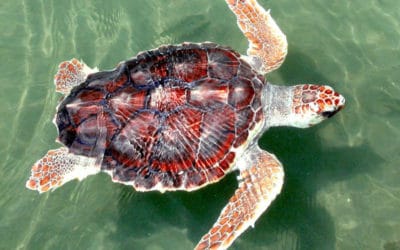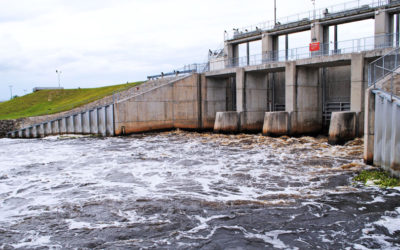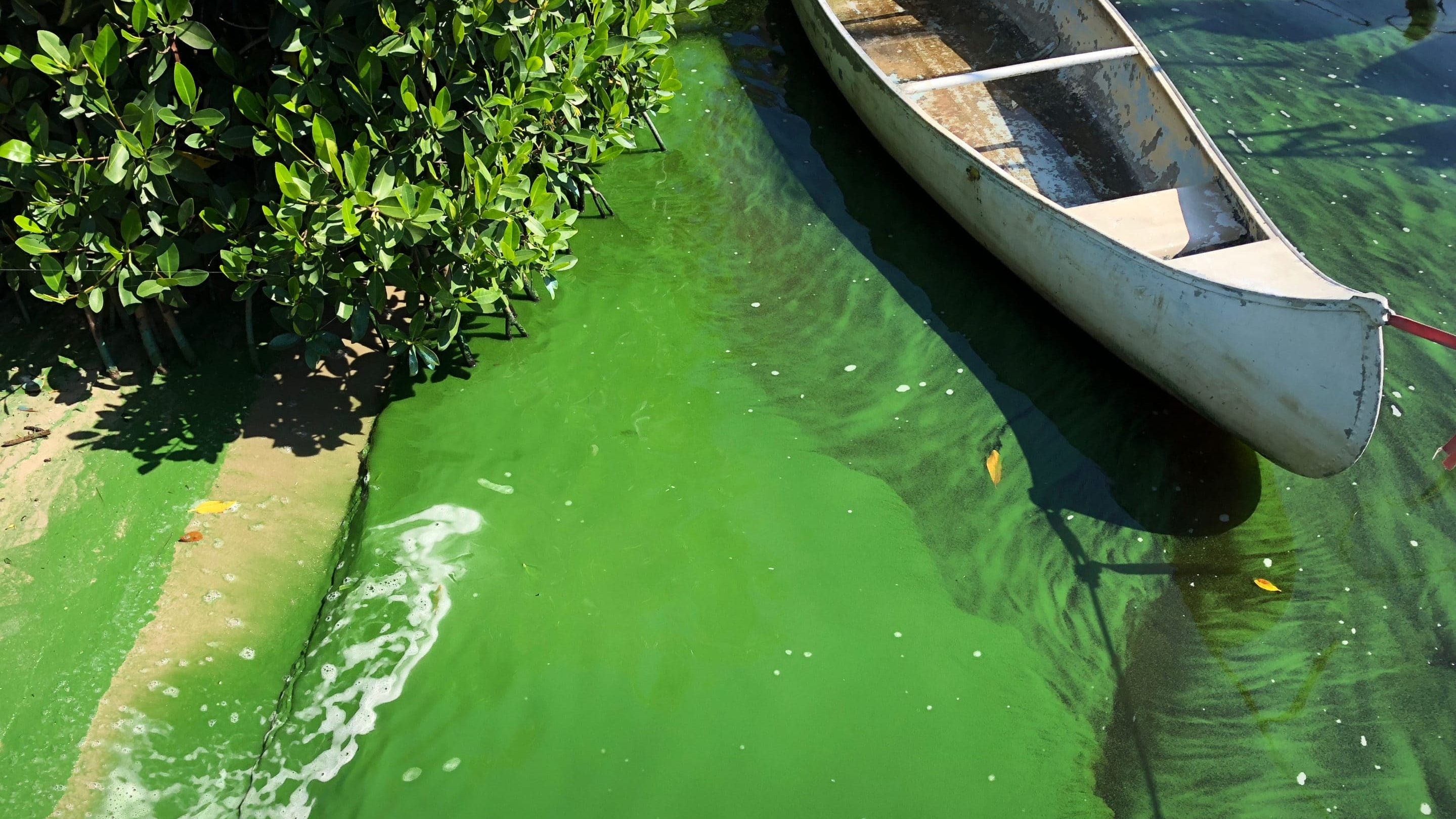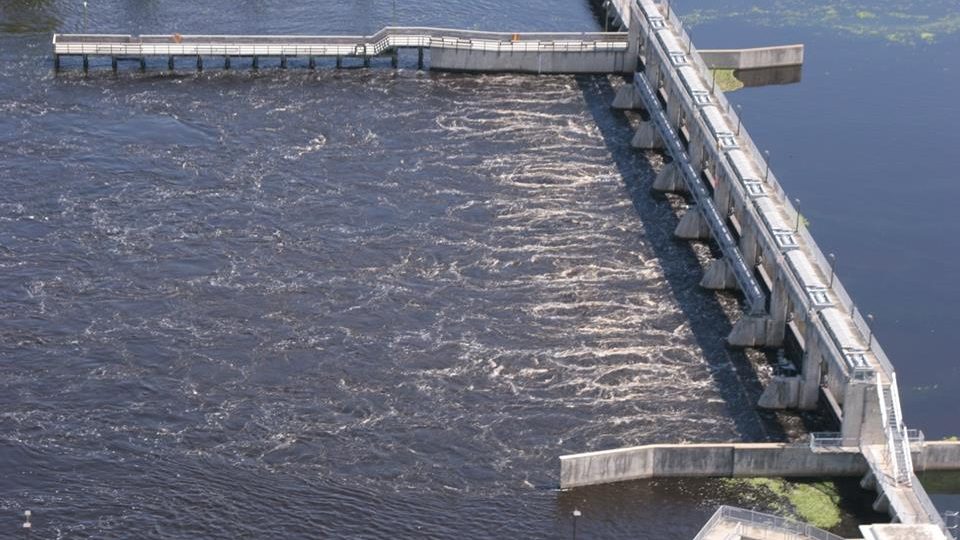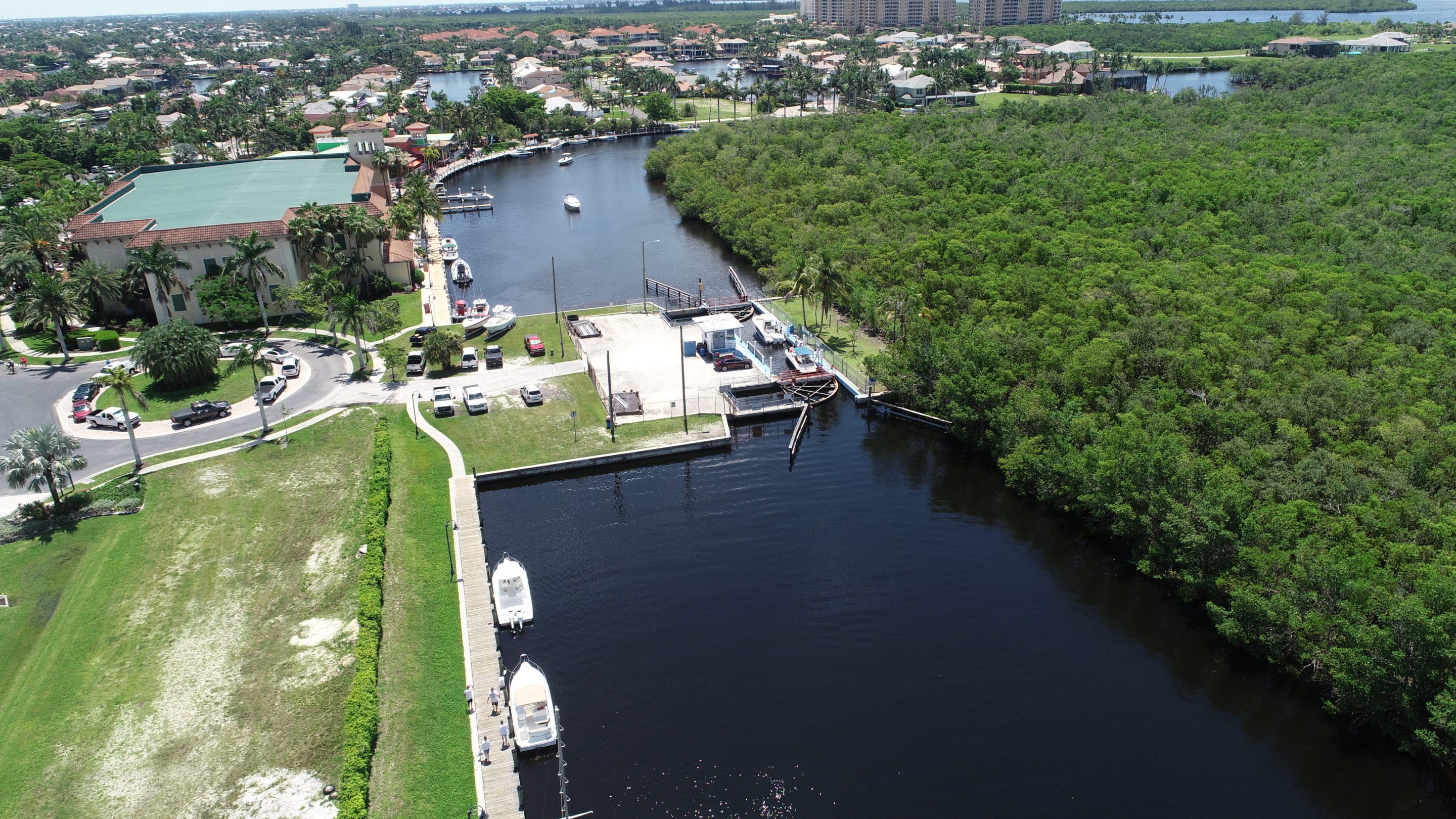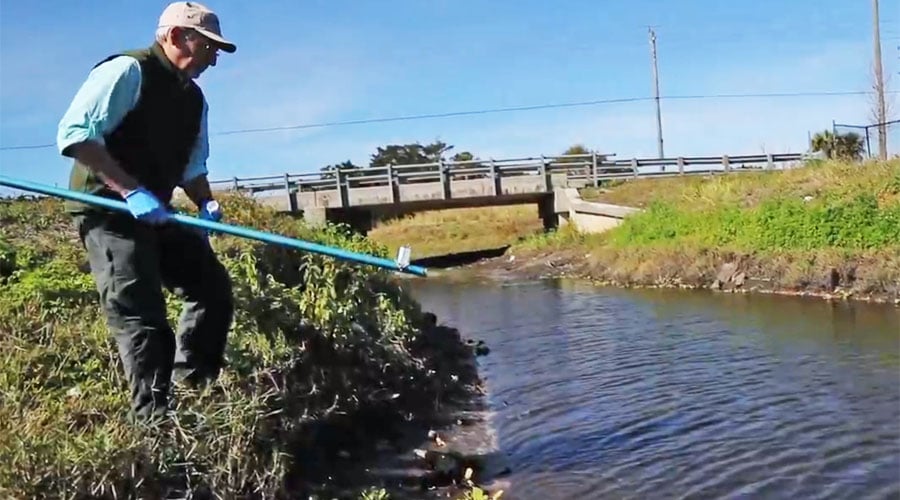Issue:
Lake Okeechobee Discharges
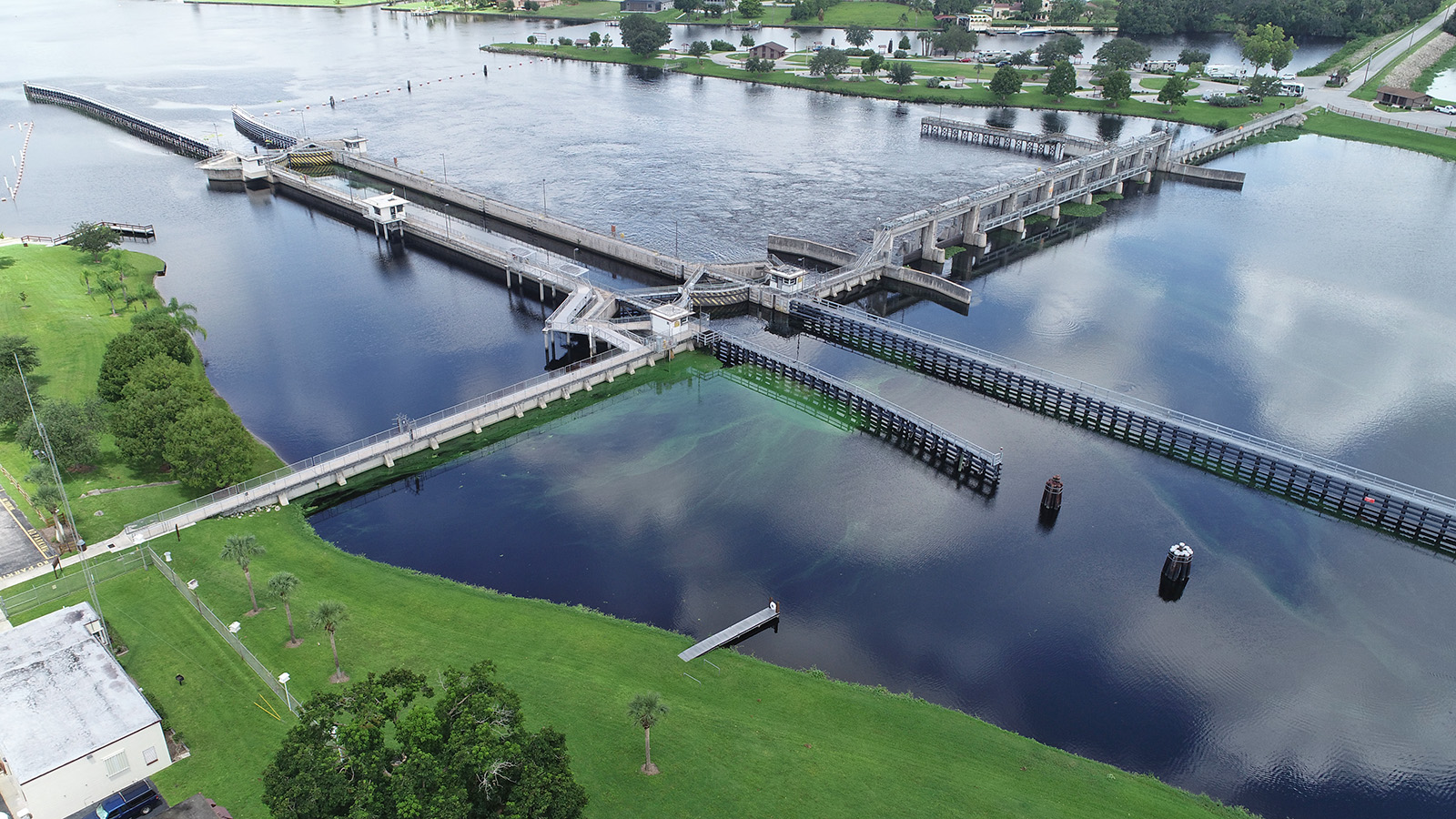
Harmful Discharges
Lake Okeechobee is often referred to as the “liquid heart” of Florida. Unfortunately, over the years, the Lake has become heavily polluted by run-off from agriculture and development in Central & South Florida.
As it was designed in 1947 to avoid flooding south of the lake, the Caloosahatchee and St. Lucie rivers are the two “safety valves” of the system during high water events. Water from Lake Okeechobee is now routinely discharged to these rivers and sent to tide in the Gulf of Mexico and Atlantic Ocean. This practice is also starving Florida Bay of the freshwater it naturally received through the historic Everglades.
In the wet season, massive amounts of nutrient polluted water is now being sent to the Caloosahatchee River. This nutrient rich water is exacerbating harmful algal blooms of increasing scope and frequency.
The federal Army Corps of Engineers is responsible for the Lake’s operation. The Corps’ operational manuals consider public safety and many other objectives set forth by the state’s South Florida Water Management District.
Minimum Flows & Levels
To complicate matters for the Caloosahatchee, our brackish water estuary thrives with a certain amount of freshwater sustaining Vallisneria tape grass near Fort Myers. When dry season rainfall is not enough to suppress salinity levels, tape grass die-offs occur.
As a result of these two seasonal swings, and water mismanagement by government agencies, the Caloosahatchee often suffers from too much freshwater in the wet season, and not enough freshwater in the dry season.
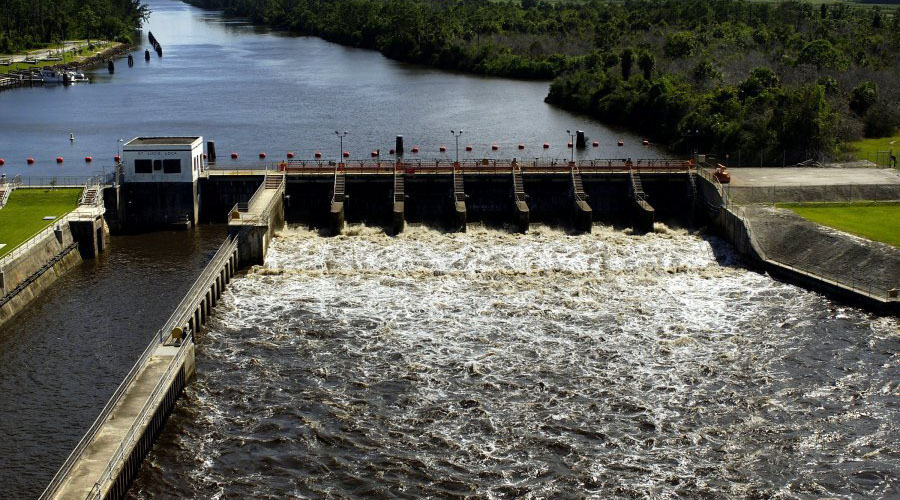
Useful Links
Lake Okeechobee Status

There are a number of tools we use to gather information about the current status of harmful algal blooms on the Lake, as well as the flows being overseen by water managers. Here are a few of the best:
Related News Stories
Lake Okeechobee
Feedback for the Lake Okeechobee System Operating Manual (LOSOM)
Calusa Waterkeeper has been following the Lake Okeechobee System Operating Manual process since it began in 2018/19. The organization and many of our members have submitted public comments throughout the process over the years. Calusa Waterkeeper has had concerns...
A Win Against the Army Corps’ Toxic Lake Okeechobee Discharges
Federal Judge orders the U.S. Corps of Engineers to consider toxic algae when releasing water from Lake Okeechobee. Fort Myers, FL: Calusa Waterkeeper is proud to be involved with a recent win in federal court regarding the management of Lake Okeechobee and its impacts to the Caloosahatchee and St. Lucie estuaries.
Algae Blooms Triggered by Lake Okeechobee Releases Harm Wildlife and Coastal Communities
Conservation groups filed a proposal in federal court to ensure that the U.S. Army Corps of Engineers’ discharges from Lake Okeechobee do not harm protected wildlife. The U.S. District Court for the Southern District of Florida held in a ruling that the Army Corps violated the Endangered Species Act.
Letter of Appreciation from City of Stuart
A partial ruling was recently reached by a federal judge on our lawsuit involving the Army Corps’ failure to assess Lake Okeechobee discharges’ impacts on downstream endangered species. In the wake of this recent decision, we received the following letter of appreciation from the Mayor of Stuart, Florida, Michael J. Meier.
Army Corps Releasing Lake Okeechobee Water to Help Caloosahatchee Estuary During Dry Times
The U.S. ACOE is releasing Lake Okeechobee water to the Caloosahatchee River again, but these discharges are expected to help the river and estuary. An extremely dry September caused SWFL to end up several inches below normal for precipitation. The dry spell caused the Army Corps to start releases.
Concerns Moore Haven Lock Released Water Despite Army Corps Reports
John Cassani flew in a small airplane over Moore Haven on Saturday and noticed the Moore Haven lock was open. “The lock was wide open. Which means the water can leave the lake and come into the river directly through the lock chamber,” Cassani said.
Make a Donation
Get Notified
Priority Issues
Harmful Algal Blooms
Cyanobacteria & Red Tide
Cyanobacteria (blue-green algae) and Karenia brevis (red tide) have been making major impacts on Southwest Florida.
Lake Okeechobee Discharges
Revise System Operating Manual
The Caloosahatchee River often suffers from too much freshwater in the wet season, and not enough freshwater in the dry season.
Cape Coral Spreader Canals
Nutrient & Sediment Loading
The City of Cape Coral is working to remove large storm-water barriers to make recreational boating more convenient.
Bacteria Monitoring
Fecal Indicator Bacteria
Calusa Waterkeeper has been at the forefront of monitoring this Fort Myers tributary for fecal bacteria indicators.



























